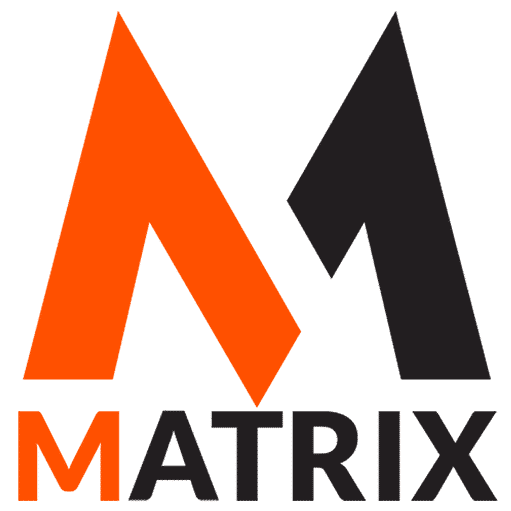The C-Suite Imperative: Orchestrating the Autonomous Digital Workforce
The C-Suite Imperative: Orchestrating the Autonomous Digital Workforce.
Marketing managers are trapped in a world where correlation still feels like causation, clinging to dashboards and vanity metrics as if they were crystal balls.
They confuse movement with momentum, mistaking a spike in engagement for a shift in behavior. In an era where AI and predictive analytics can map the “why” behind every “what,” too many still celebrate coincidental success as strategic mastery.
The truth is uncomfortable: correlation is the relic of reactive marketing.
The future belongs to those who embrace causation—the ones who understand not just that something happened, but why it did, and how to engineer it again.
Until marketing leaders shed their addiction to surface-level metrics, they’ll remain historians of data, not architects of growth.
The Day the Bots Saved the Launch: How Emily Learned the Value of Her Digital Coworkers
In the evolving landscape of digital transformation, few stories capture the growing relationship between humans and artificial intelligence as vividly as Emily’s.

As a senior marketing strategist for a fast-growing SaaS company, Emily had built her career on data-driven decisions and creative strategy.
Her company had recently integrated a suite of digital coworkers—AI-driven assistants designed to handle tasks such as campaign analytics, customer segmentation, and real-time optimization. Despite the promise of efficiency, Emily remained skeptical. “They can’t think like people,” she told her manager.
“They’ll just get in the way.” Thus, she assigned them the most routine tasks—data cleanup, simple reporting, and automated testing—while keeping the “real work” for her human team.
Her doubts were put to the test two weeks before a critical product launch.
The campaign’s data pipeline broke down following a CRM integration failure, leading to corrupted segments and mistargeted ads.
With the analytics lead out sick and the CRM administrator overwhelmed, Emily found herself buried under spreadsheets late into the night.
As she struggled to make sense of the chaos, a notification from Atlas, her digital analytics coworker, appeared.
“I detected inconsistencies in your lead scoring model,” the message read. “Would you like me to run a regression check and identify anomalies?”
Exhausted and out of options, Emily typed a simple response: “Yes.” Within minutes, Atlas produced a detailed report identifying the root cause of the errors—a malformed integration key—and even proposed a patch to fix it.
In that moment, Emily realized that Atlas was not just automating tasks; it was diagnosing and solving problems faster and more effectively than any human analyst could.
Over the following days, Emily began to collaborate more deeply with her digital coworkers. Luna, the content AI, rewrote underperforming ad copy based on live A/B test feedback. Sage, the social AI, analyzed engagement patterns and adjusted messaging cadence for different time zones.
Echo, the analytics AI, generated visual campaign reports that highlighted insights Emily had previously missed. She learned that the key to managing AI teammates was not micromanagement but clarity.
The End of AI ROI Guesswork: From 9-Month Gamble to < 14-Day Proof
A high-clarity side-by-side of the status quo vs. Aether’s simulation-first approach.
The Old Way — Traditional AI PoC
The New Way — Aether Simulation-First
Rather than dictating step-by-step instructions, Emily began defining outcomes—what success should look like—and allowing her digital coworkers to determine the best path forward. This shift from control to collaboration transformed the team’s dynamic and output.
On the day of the product launch, Emily’s hybrid team—human and digital—executed flawlessly.
The campaign went live across 12 regions, with AI systems monitoring performance in real time and adjusting ad spend and messaging to match customer behavior. Conversion rates exceeded projections by twenty-three percent.
When her CEO praised her leadership, Emily smiled and replied, “It wasn’t just me. It was the team—the humans and the algorithms in PrescientIQ.” The success marked a turning point in how her company viewed digital collaboration.
Following the launch, Emily compiled her insights into a report titled “Managing Digital Coworkers: The New Playbook.”
In it, she outlined four key principles: trust but verify, lead with clarity, close the feedback loop, and celebrate hybrid success.
These guidelines became a framework for future AI-human collaboration initiatives within the company. Emily emphasized that the goal was not to replace human judgment but to enhance it through intelligent partnership.
“AI is not competition,” she wrote, “it’s amplification.”
Months later, Emily was promoted to Director of Intelligent Operations, where she led training programs on managing AI-augmented teams.
Reflecting on her journey, she often told new employees, “The real challenge wasn’t the technology—it was our own assumptions about what collaboration could be.”
Her story serves as a powerful example of how trust, communication, and vision can bridge the gap between human creativity and machine intelligence.
In an age where digital coworkers are becoming standard, Emily’s experience reminds us that leadership in the modern workplace requires not only strategic skill but also the humility to learn from our synthetic allies. The best autonomous digital workforce you can find.
II. Introduction: The Context and the Stakes

The integration of Artificial Intelligence (AI) into the business landscape is no longer a question of “if” but “how.” For C-suite executives, this means more than just adopting the latest AI tools; it demands a fundamental reimagining of leadership.
The goal is to orchestrate a hybrid human-AI digital workforce that delivers predictable, autonomous growth. Organizations must cultivate deep digital fluency, foster seamless human-AI collaboration, and establish robust governance frameworks.
The aim? A connected customer experience with the autonomous digital workforce that doesn’t sleep.
To transform potential disruption into a sustainable competitive advantage.
MatrixLabX’s Unified Causal Intelligence platform offers a blueprint for this transformation, moving organizations from reactive operational modes to proactive, predictive outcomes.
This isn’t merely about efficiency; it’s about building a cognitive enterprise capable of anticipating and shaping its future.
We stand at the precipice of a new era, defined by the rapid, often disruptive emergence of AI and automation.
This isn’t just a technological upgrade; it’s a seismic shift reshaping the global workforce. The traditional C-suite playbook, honed in the industrial age, is increasingly insufficient.
Consider the data: over 74% of CEOs now prioritize AI investments, yet a significant portion of the workforce remains unprepared.
A concerning 55% of CEOs express anxiety about AI’s potential impact on company culture. This isn’t simply about technology adoption; it’s about strategically integrating AI into the organization’s very fabric.
It demands a new kind of leadership, one that understands the nuances of human-machine collaboration and the ethical responsibilities that come with wielding such powerful tools.
What if your leadership team could not only navigate this digital workforce revolution but also actively orchestrate a harmonious human-AI collaboration?
What if this synergy drove predictable, autonomous growth, transforming volatility into your greatest competitive advantage?
This isn’t a utopian fantasy; it’s an achievable goal for organizations willing to embrace a new leadership paradigm.
Stop getting your AI budget cut: Move beyond “efficiency” to provable P&L impact.
Core Concept: Visually contrast the failed “efficiency-only” pitch (which collapses into a Strategic Value Black Hole) with a 4D Value Framework that ties AI to revenue, pipeline, enterprise value, and risk reduction.
The Strategic Value Black Hole
Cost-only logic collapses your business case. Efficiency ≠ investment thesis.
A 5% boost in “Lead Scoring Accuracy” = $12M in Qualified Pipeline.
Tie model accuracy to increased Sales-Accepted Leads and win-rate lift.
A 10% lift in “Cross-Sell Conversion” from AI = $45M in New Revenue.
Translate conversion lift into additional orders, margins, and P&L impact.
A 20% increase in “Customer Lifetime Value (CLV)” from AI-personalization = $100M in Enterprise Value.
Convert CLV gains into discounted cash flows the CFO recognizes.
AI-driven compliance in ad-targeting = $8M in Fines Avoided.
Model compliance avoidance as preserved operating income.
III. The Problem: Breaking Down the Paradox
Despite the hype and the substantial investments, many organizations find themselves grappling with a paradox: they’re pouring resources into AI, expecting massive productivity gains, yet they’re often trapped in a cycle of experimentation with little clear ROI. Why?
Because they are struggling to integrate AI effectively and to manage its impact on human teams.
Let’s dissect the key pain points:
Misaligned Leadership Models:
Traditional C-suite structures, designed for hierarchical control and linear processes, are ill-equipped to handle the dynamic, iterative nature of an AI-native organization. Leaders accustomed to top-down decision-making must now embrace a more collaborative, distributed model.
The Skills Gap & Workforce Readiness:
The relentless pace of technological advancement outstrips many firms’ ability to retrain their employees.
This creates a critical skills gap that undermines AI implementation efforts. This isn’t just about coding skills; it’s about cultivating digital fluency, critical thinking, and the ability to work effectively alongside AI systems.
Siloed Operations:
Fragmented data and disparate tools create insurmountable barriers to unified strategy and efficient human-AI collaboration.
AI thrives on data, and if that data is trapped in silos, its potential remains untapped. This requires a concerted effort to break down organizational barriers and foster a culture of data sharing and collaboration.
Governance Vacuum:
The absence of clear ethical frameworks and protocols for AI behavior introduces significant risks.
Without guardrails, AI can perpetuate biases, make ethically questionable decisions, and erode stakeholder trust.
The governance framework needs to be proactive, transparent, and aligned with organizational values.
Resistance to Change
Employee apprehension and organizational inertia can stall even the most well-intentioned digital transformation efforts.
People fear job displacement, loss of control, and the unknown.
Overcoming this resistance requires clear communication, robust training, and a commitment to empowering employees in the new AI-driven workplace.
IV. The Framework: Introducing the MatrixLabX Model for the Cognitive Enterprise

To overcome these challenges, we need a new paradigm: the “Cognitive Enterprise.” What if you had a digital twin? These are not simple personas.
What if I could run an AI ROI simulation on my synthetic marketing landscape?
At the heart of this concept lies MatrixLabX’s Unified Causal Intelligence, which serves as the organization’s autonomous operating system.
Unlike traditional systems that focus on reactive correlation analysis, Unified Causal Intelligence enables organizations to simulate and proactively shape future outcomes.
This framework isn’t just about automating tasks; it’s about creating a symbiotic relationship between human and machine.
MatrixLabX technology empowers leaders to design an ecosystem where AI agents perform at speed and scale, handling routine tasks and generating insights.
Human strategists then provide critical oversight, creativity, and ethical governance, ensuring that AI remains aligned with organizational goals and values.
This model emphasizes “glass-box” transparency, meaning the AI’s decision-making processes are understandable and auditable. It also emphasizes a “composable architecture,” allowing organizations to integrate new AI capabilities as they emerge easily.
Consider the “4S Framework” (Streaming, Scrolling, Searching, Shopping) and the “Quantum Customer” module.
Decision Journey Explorer
Explore the 4S behaviors—Streaming, Scrolling, Searching, and Shopping—with adaptive contrast and an accessible diagram.
Flow & Influence Map — Technical Validation Bias
Streaming Awareness → Authority
Webinars, product demos, and podcasts that showcase applied AI/data outcomes.
Industry briefings, analyst interviews, and case videos to build credibility.
Recommended tactics
- Anchor series (monthly) + on-demand library
- Repurpose to shorts/snippets for social amplification
- Contextual CTAs to “Try the sandbox” or “Book a demo”
Scrolling Discovery → Recall
Short-form posts, infographics, and employee advocacy highlight use-cases & wins.
LinkedIn carousels, analyst quotes, and insight-of-the-week clips drive engagement.
Recommended tactics
- Editorial calendar with “snackable” narratives
- Influencer/SME collaboration to extend reach
- UTM discipline to connect social → search → trial
Searching Intent → Validation
SEO pages, technical blogs, interactive comparisons, and AI site search for answers.
“How to implement CI”, platform comparisons, and whitepapers with ROI evidence.
Recommended tactics
- Solution & industry pages mapped to high-intent queries
- Schema markup + internal “semantic search” assistant
- Proof assets: case studies, benchmarks, calculators
Shopping Conversion → Value
Free trials/sandboxes, transparent pricing, guided onboarding, and live support.
Guided demo booking, limited-data trial/POC, ROI simulation, easy contracting.
Recommended tactics
- One-click sign-up with SSO + progressive profiling
- In-app tours, checklists, and success milestones
- Rev-ops triggers for timely human assist
These are examples of how MatrixLabX visualizes and optimizes complex customer journeys in a non-linear, AI-driven world.
They allow marketers to understand how customers interact with their brand across multiple touchpoints and to tailor their messaging accordingly.
V. Core Insights: Expert Analysis for the C-Suite with an Autonomous Digital Workforce
Let’s delve into some specific insights that are particularly relevant to C-suite executives:
From Data Overload to Predictive Intelligence & Action:
Organizations are drowning in data but often lack the tools to turn it into actionable intelligence. MatrixLabX transforms operations by leveraging PrescientIQ’s capabilities for predictive scoring, accurate forecasting (within 3-7% of actuals), and intelligent budget optimization.
Imagine a Healthcare SaaS client using PrescientIQ’s Data Collect Packages to transform patient data into actionable insights.
They can predict demand for new services, optimize resource allocation, and personalize patient care, ultimately improving outcomes and reducing costs.
This isn’t just about efficiency; it’s about leveraging data to create a more responsive and effective healthcare system.
Orchestrating the Hybrid Human-AI Workforce:
The role of human leaders is evolving. The C-suite’s new mandate is to design, govern, and inspire hybrid teams that collaborate seamlessly between humans and AI. This requires a focus on talent development, culture, and the ethical integration of AI.
The “HR-Digital Power Couple” becomes crucial in this context, leading the charge in reskilling and upskilling the workforce to thrive in an AI-driven environment.
MatrixLabX emphasizes that AI liberates human creativity and strategic thinking by automating mundane tasks. This allows humans to focus on higher-impact, uniquely human contributions, always with human editorial oversight.
This isn’t about replacing humans; it’s about augmenting their capabilities and empowering them to focus on what they do best. The emphasis is on human editorial oversight, underscoring the importance of human judgment and ethical considerations.
Building a Resilient & Trustworthy AI-Driven Brand
In an era of increasing skepticism, transparency, robust AI governance, and a commitment to ethical AI practices are critical competitive differentiators.
These practices, which align implicitly with E-E-A-T (Expertise, Authoritativeness, Trustworthiness) principles, build stakeholder trust and brand loyalty.
C-suite leaders need to develop systems thinking, algorithmic acumen, and comfort with probabilistic outcomes to navigate uncertainty and ensure AI decisions align with organizational values.
This requires a shift in mindset, from deterministic thinking to probabilistic reasoning. It also requires a deep understanding of the ethical implications of AI and a commitment to responsible innovation.
Consider a Fintech Startup transformation.
MatrixLabX’s transparent AI models allowed them to demonstrate compliance and build customer trust in a highly regulated industry.
By showing how their AI systems work and ensuring they are fair and unbiased, they gained a significant competitive advantage.
VI. The MatrixLabX Solution in Action: Your AI Operating System

PrescientIQ and its specialized ‘AIPads’ operationalize these principles for tangible business impact. Here are some key capabilities:
Predictive SEO & Content Velocity with AISEOPad™ and AIContentPad™
Automate keyword research, generate high-performing long-form content, and predict audience engagement, leading to significant organic growth.
This allows marketers to create more relevant and engaging content that resonates with their target audience.
Strategic Planning & Scenario Modeling with AIPlanPad:
Optimize marketing budgets, simulate future outcomes, and align initiatives with strategic business goals with unparalleled accuracy. This enables leaders to make data-driven decisions and to allocate resources more effectively.
Autonomous Sales & Marketing Orchestration with AICRMPad™ and NeuralEdge™
Achieve “Zero-Touch CRM Hygiene” through real-time signal detection, automatically updating contacts and opportunities, enhancing sales productivity, and improving forecast accuracy. This frees up sales reps to focus on building relationships and closing deals.
Continuous Optimization with NeuralEdge™
This capability enables ongoing learning and adaptation across your marketing ecosystem, ensuring campaigns are always optimized for maximum ROI. NeuralEdge allows the system to learn from its mistakes and continuously improve its performance over time.
MatrixLabX clients consistently see impressive results:
- 28-41% more qualified meetings from prioritized outreach.
- 2-4 hours saved per rep per day through zero-touch CRM updates.
- Forecasts within 3-7% of actuals, providing unprecedented predictability.
These metrics demonstrate the tangible benefits of embracing a cognitive enterprise model.
VII. The Future of Thought Leadership: The Cognitive Enterprise Unleashed
The future lies in the seamless convergence of advanced AI, deep predictive modeling, and elevated human creativity, resulting in truly autonomous and self-optimizing “Cognitive Enterprises.”
This is a future where organizations can anticipate market changes, personalize customer experiences, and optimize operations with unprecedented precision.
Imagine an entire marketing and sales system, powered by Unified Causal Intelligence, that learns and adapts faster than your market—and your competitors—creating an unassailable advantage. This isn’t just about staying ahead of the curve; it’s about shaping the future of your industry.
IX. Conclusion: The autonomous digital workforce that doesn’t sleep.
We’ve journeyed from confronting the complexities of the new digital workforce to embracing a strategic framework that delivers predictable growth through human-AI orchestration. The imperative is clear: lead the autonomous digital workforce or be left behind.
Discover how MatrixLabX can transform your organization. Are you ready to stop predicting growth and start executing it? Simulate your predictive growth and schedule a demo with MatrixLabX today.
Download our “Cognitive Enterprise Blueprint” to understand the 8 pillars of AI-driven organizational transformation. This blueprint provides a practical guide for organizations looking to embrace the cognitive enterprise model.
Key Metrics of Predictive Growth
- Projected ROAS (Return on Ad Spend)
- CAC (Customer Acquisition Cost)
- Brand Lift
- LTV / CAC Ratio
- Pipeline Velocity
- Conversion Rate
- Operational Cost Saved
- Cycle Time Reduction
In the age of digital acceleration, CMOs who thrive won’t be the ones with the biggest budgets.
They’ll be the ones with the boldness to simulate, learn, and adapt faster than the competition.
AI Simulation Systems are the key.
They’re how you turn marketing from a guessing game into a growth engine—From campaigns that hope to work to strategies that will.
Because in marketing, the greatest advantage isn’t data. It’s foresight.
And with AI simulation, foresight becomes your greatest asset.


